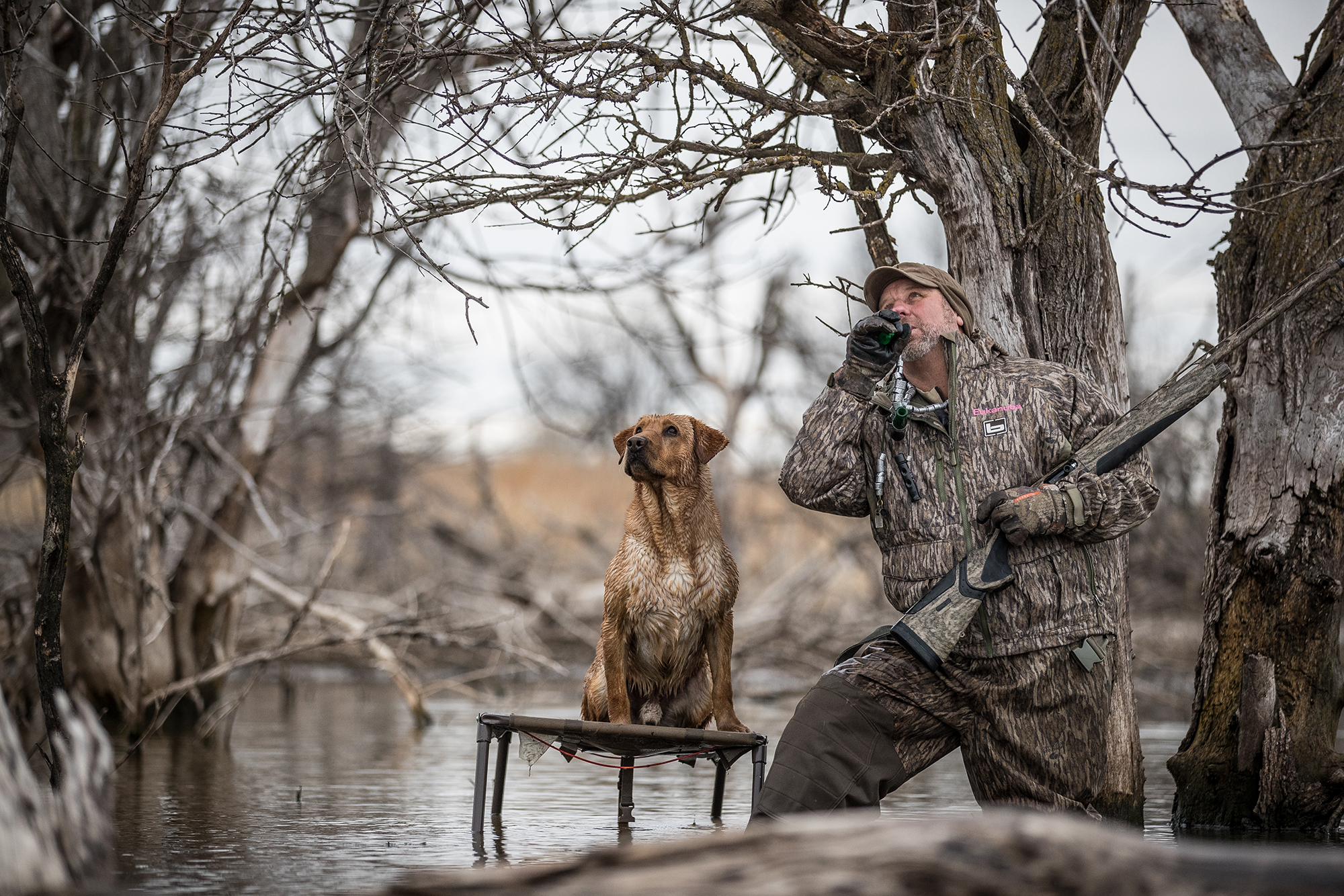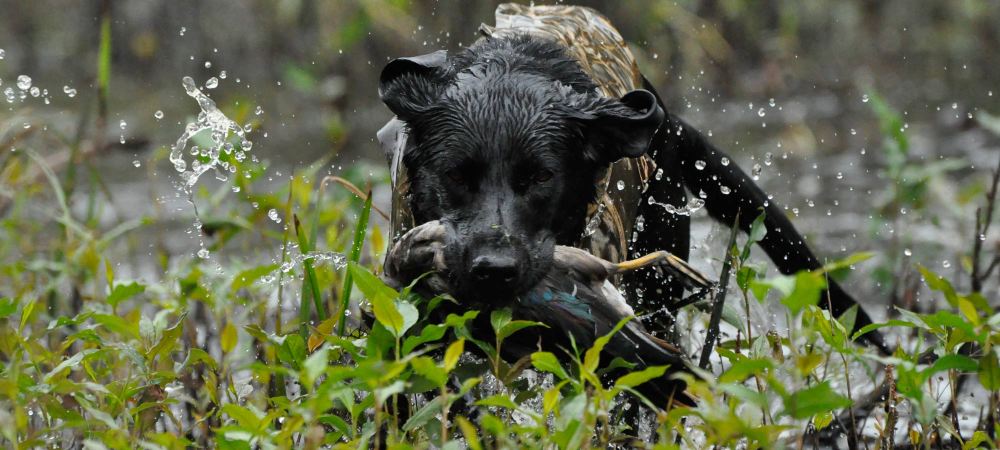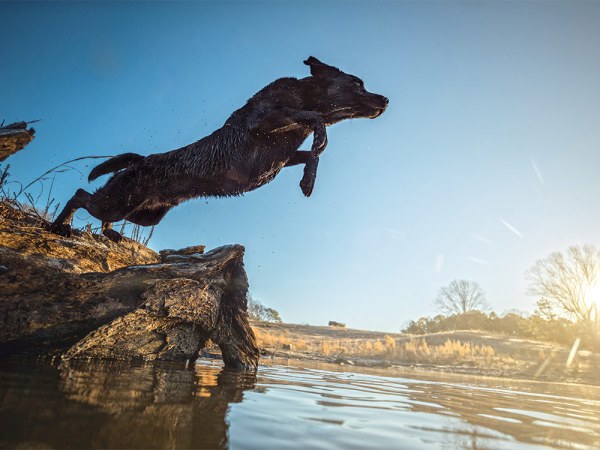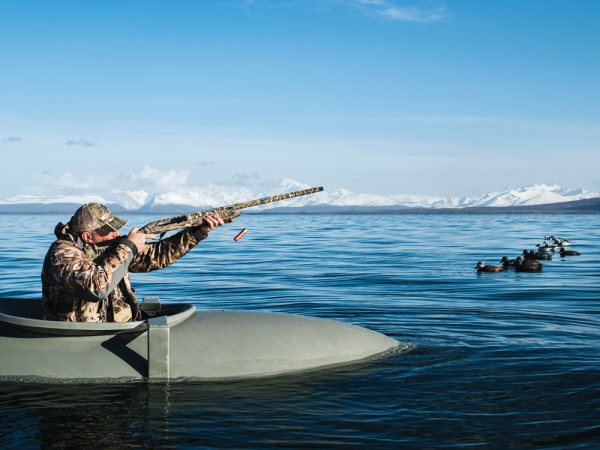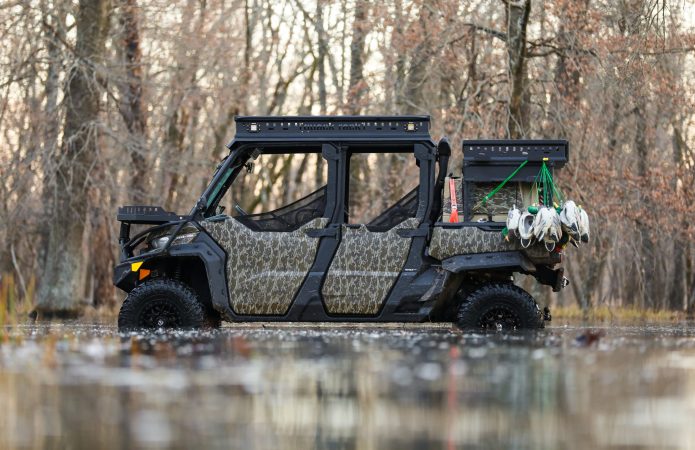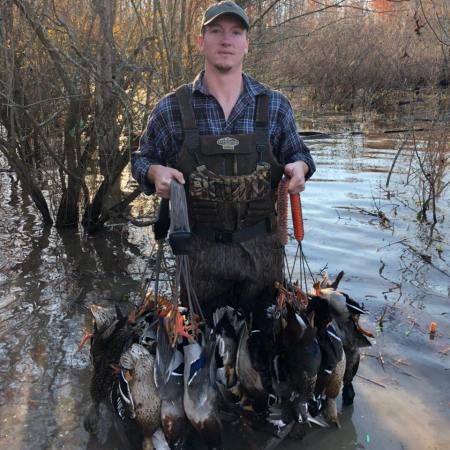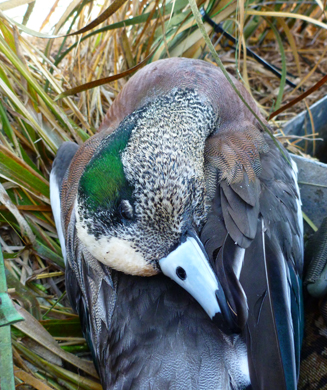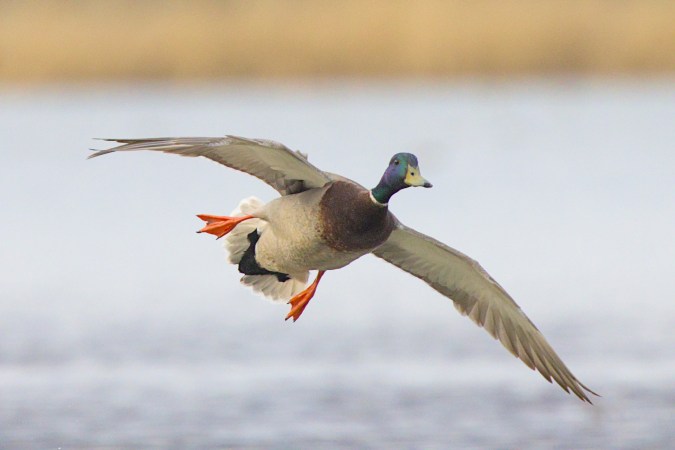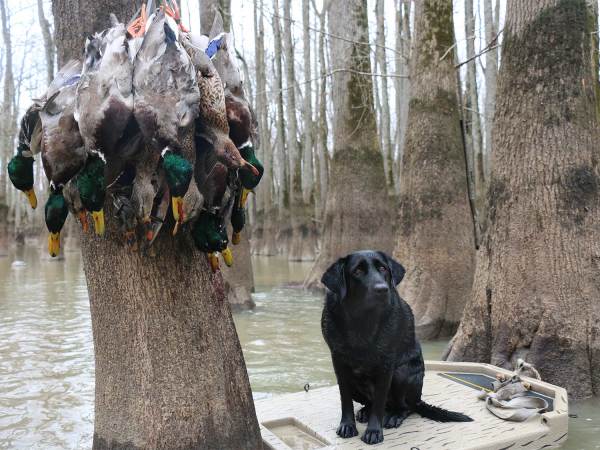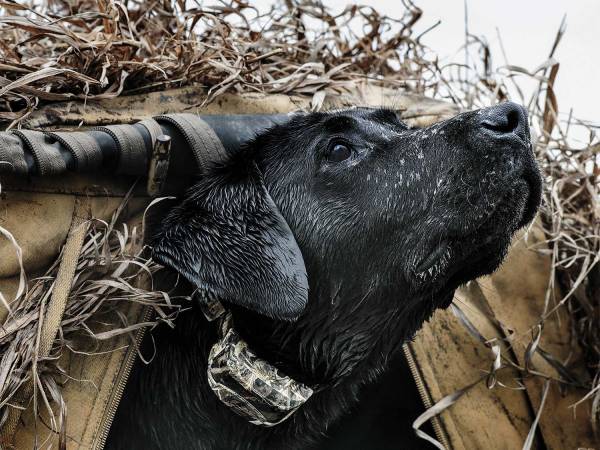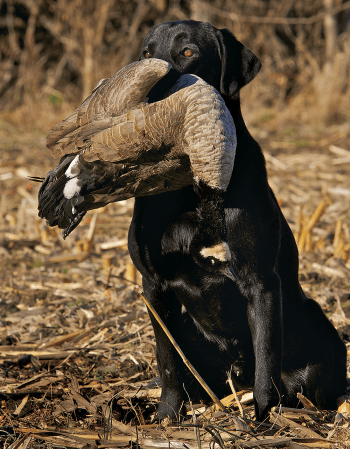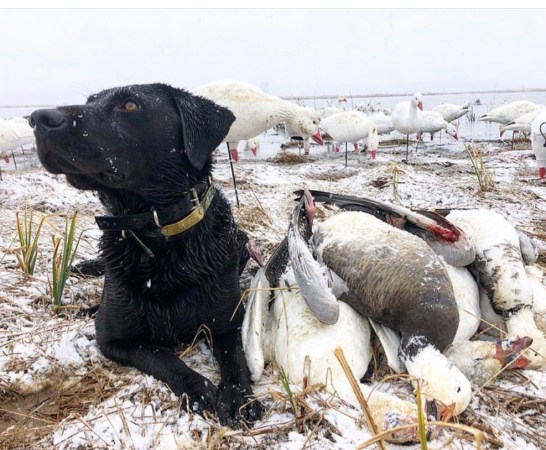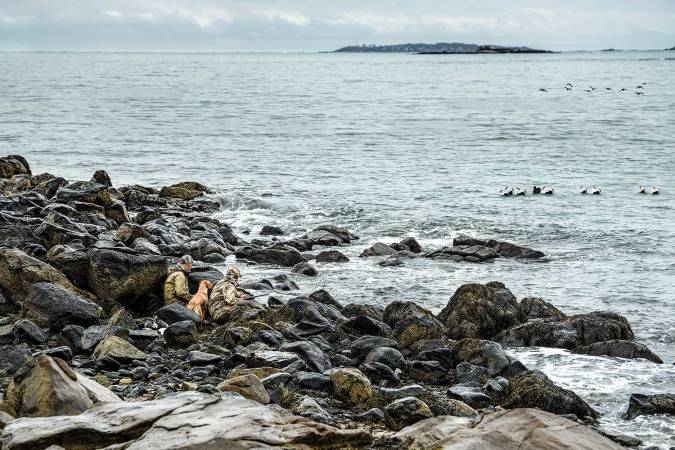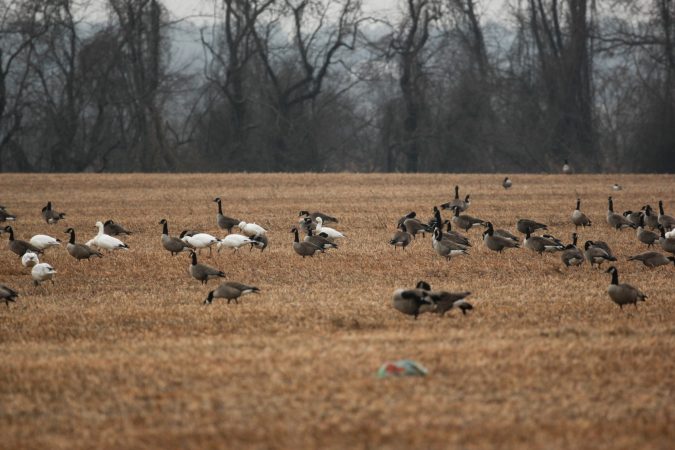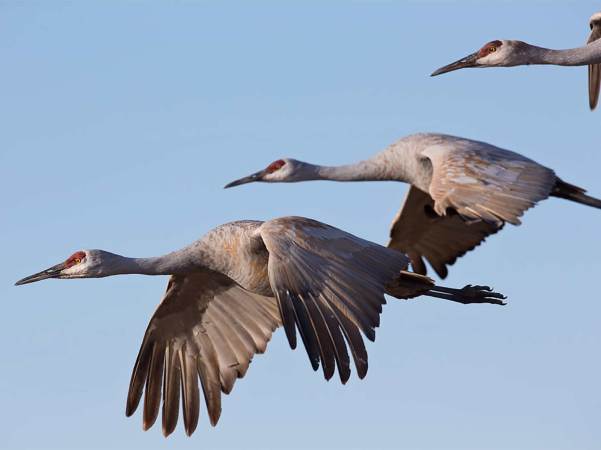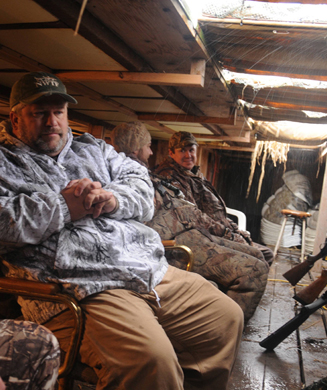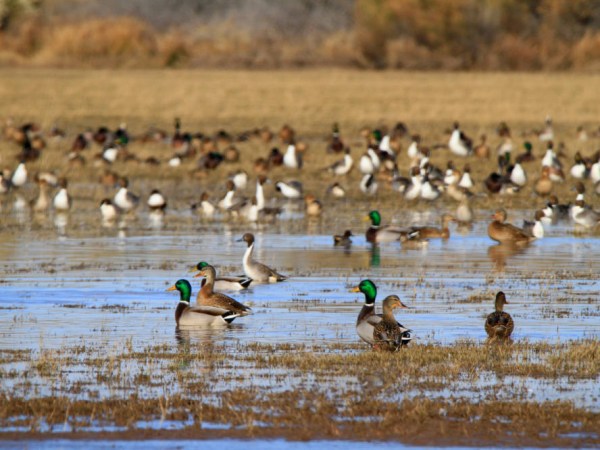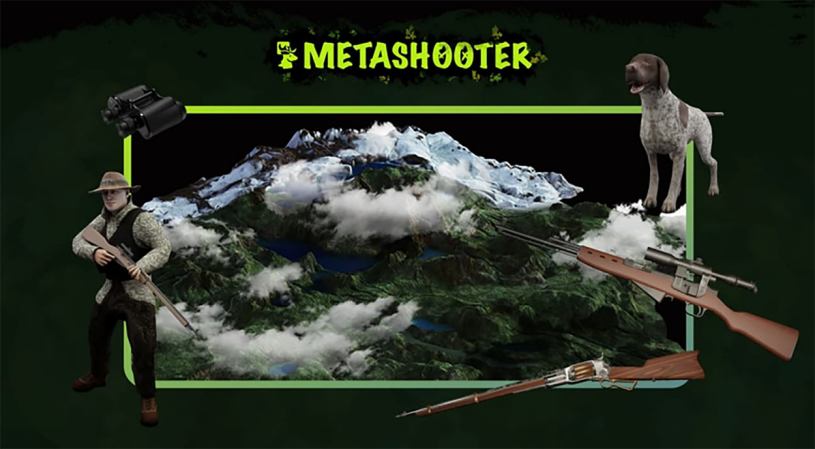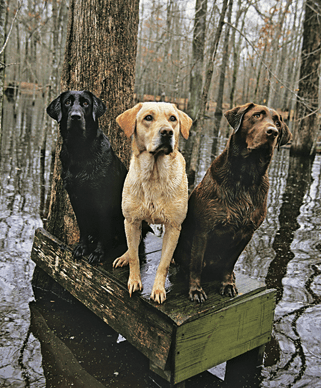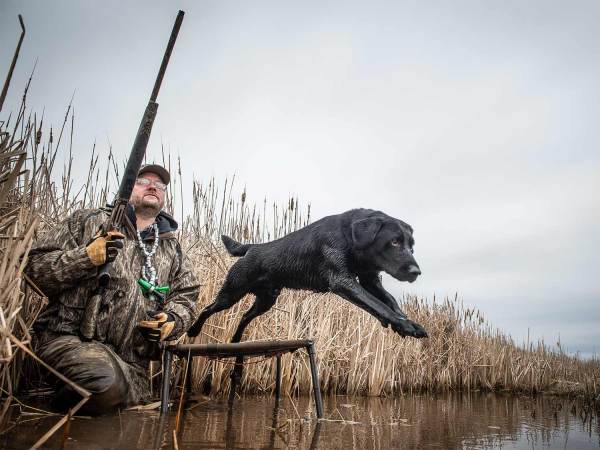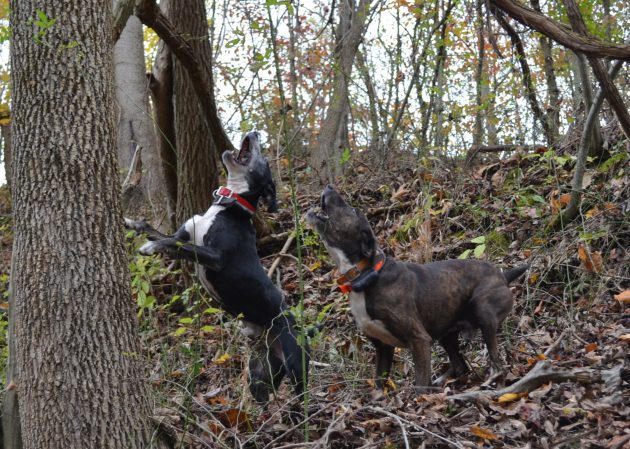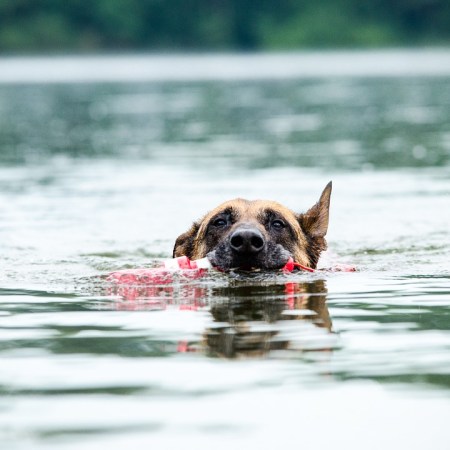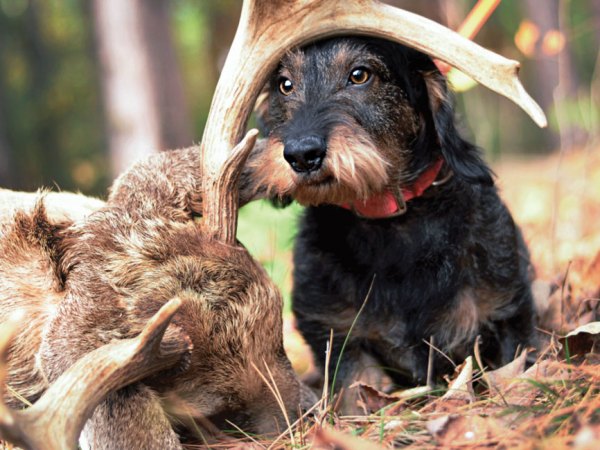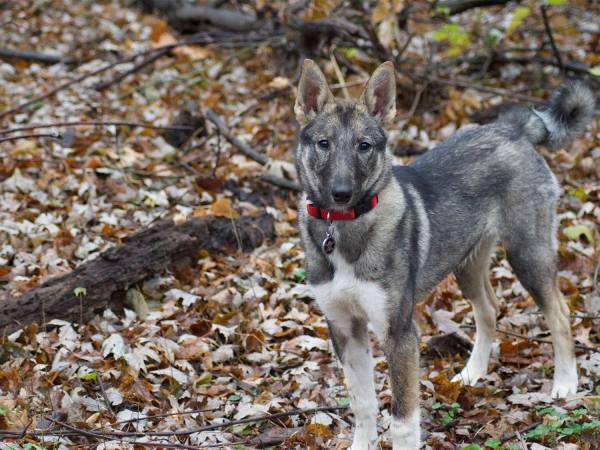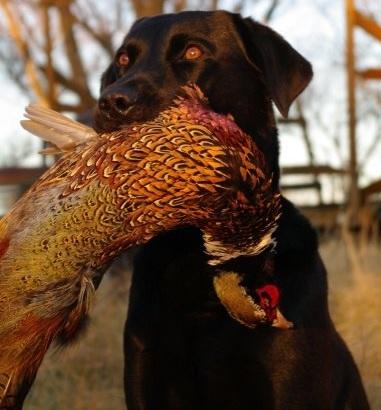Who doesn’t love a retriever? They’re smart, athletic, obedient, and biddable dogs that love to work. They also love to please their owners. Plus, the best duck hunting dogs will also make you a more effective waterfowler. They’ll finder birds that no human hunter could, and they allow you to hunt places that you wouldn’t be able to otherwise (without losing birds).
If you’re in the market for a first pup for duck hunting then check out these top 11 breeds. Once you narrow down your breed of choice, you’ll be ready to start a search for your new hunting buddy.
American Labrador Retriever
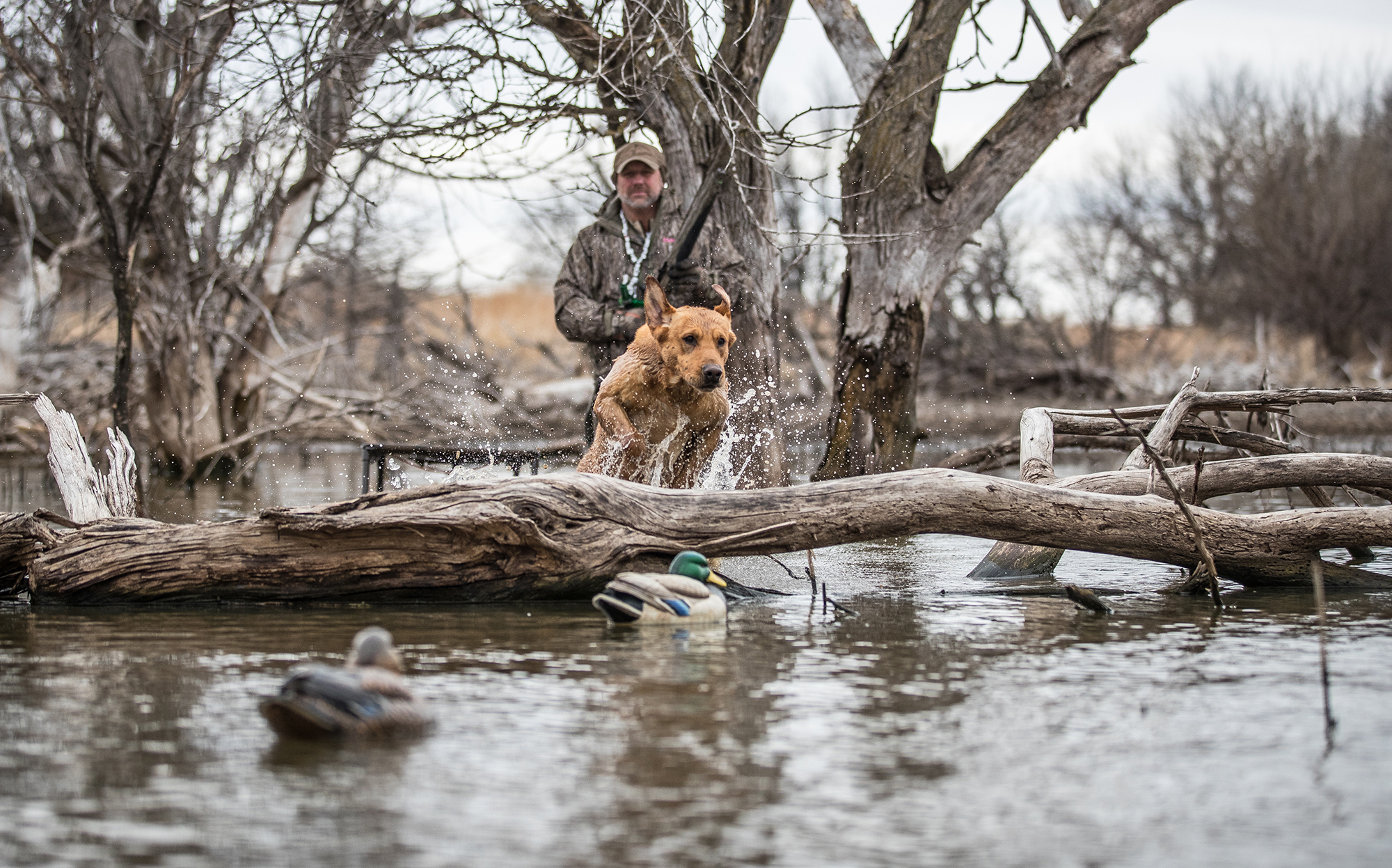
- Physical height: 21-25 inches
- Weight: Male 65-70 pounds
- Weight: Female 55-60 pounds
- Disposition: Friendly, athletic, and calm
- Coloration: Black, chocolate, yellow
Plain and simple, the Labrador retriever is America’s sweetheart. Labs have been the American Kennel Club’s most popular breed in the United States since 1991, and there’s no reason to believe they won’t repeat for years to come. Folks love the breed’s friendly disposition, enthusiastic work ethic, and indefatigable energy. Whether it’s running or swimming, Labs love to work, and they’re biddable and quick learners. Regular workouts are important. A bored lab can become hyperactive. Another byproduct of light workouts is weight gain. Labs love to eat and if they’re not getting enough exercise they can pack on extra pounds. Their double coat keeps them warm and dry in frigid duck hunting conditions. But make sure they’re dry before you load ‘em up; if they’re wet and in a hot kennel they can develop a skin fungus. The dam and sire’s hips, elbows, and eyes should be evaluated and certified healthy.
Chris Akin of Webb Footed Kennels in Jonesboro, Arkansas, has been training Labs for over four decades. In that time, he titled 350 Hunting Retriever Champions, 175 Mater Hunters, and 35 Grand Hunting Retriever Champions.
“Labs are always up for training, and they can handle the pressure of a field trialing or testing program,” says Akin, a Eukanuba Pro Trainer. “The breed’s hunting ability is legendary, and when you’re done working them in the fields and water, they are a perfect family dog. As a pro trainer, I like that there is an easy transference between their owners and me. When I’m done with their training and send ‘em back home I know their owners can pick up where I left off.”
British Lab
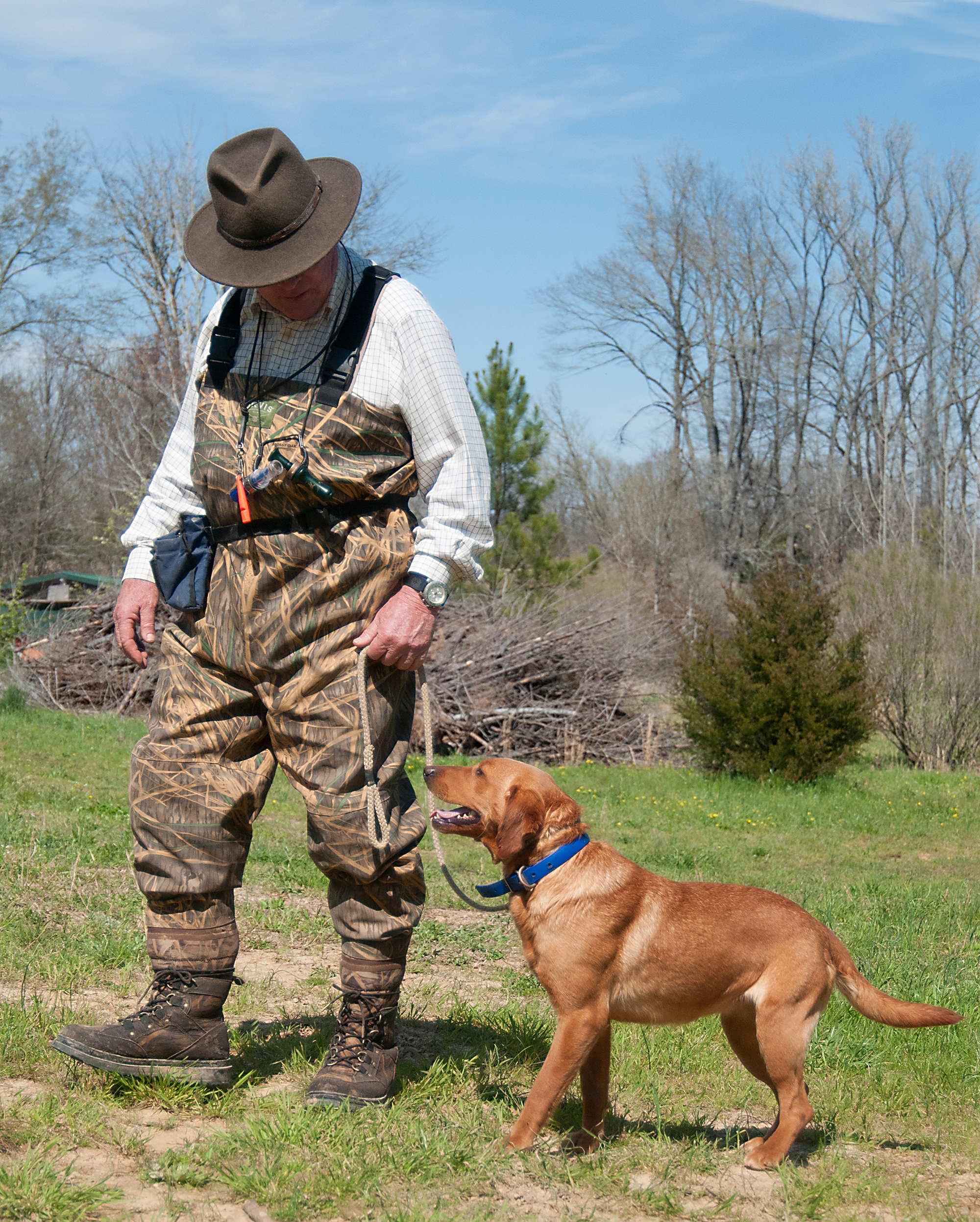
- Physical height: 22-22 1/2 inches
- Weight: Male 45-50 pounds
- Weight: Female 30-40 pounds
- Disposition: Calm with a deep desire to please
- Coloration: black, chocolate, yellow (Note: England’s The Kennel Club regards the fox red coloration as yellow and does not recognize silver).
The British Lab is slightly wider than an American Lab and has a thicker neck and a fuller chest. The Brits want their dogs to save it for the field. Their breeding reflects that attitude as British Labs are described as “calm at your feet and hell in the field.” Who wouldn’t want a calm, rock-solid steady dog that turns on the drive when on task? Positive training is the preferred method for these dogs that may be from England, Scotland, Ireland, or Wales.
Legendary trainer Robert Milner of Tennessee’s Duckhill Kennels, is credited with introducing the British Lab to the United States.
“I had trained over 3,000 American Labs and was tired of fighting with them,” he says. “On one trip to England I saw their good manners and tenacious drive, particularly when digging out cripples. I thought American hunters would benefit from these dogs and I started importing them though my first kennel, Wildrose Kennel. What I’ve always liked about the British Lab is that their breeding is elevated to such a high degree that training is easy. Most are smaller than a lot of American Labs, too.”
Golden Retriever
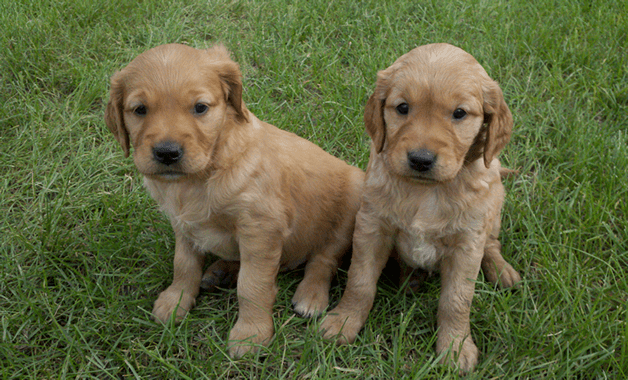
- Physical height: 21-24 inches
- Weight: Male 55-65 pounds
- Weight: Female 45-55 pounds
- Disposition: Intelligent, cheerful disposition, easy to train
- Coloration: Light, Golden or Dark Golden
Golden retrievers are tough not to love, and that’s probably why they’re the AKC’s third most popular breed. They’re serious in the field, and have a positive, upbeat attitude. Daily work is important for these high-energy dogs that love to swim as much as they love to run. They are a good choice if you also like to hunt upland birds. Goldens are eager to please which makes them fun to train. They have excellent noses, and are a perfect choice for beginner handlers. They do require additional post-hunt clean up. Goldens are good with families, too.
Chesapeake Bay Retriever
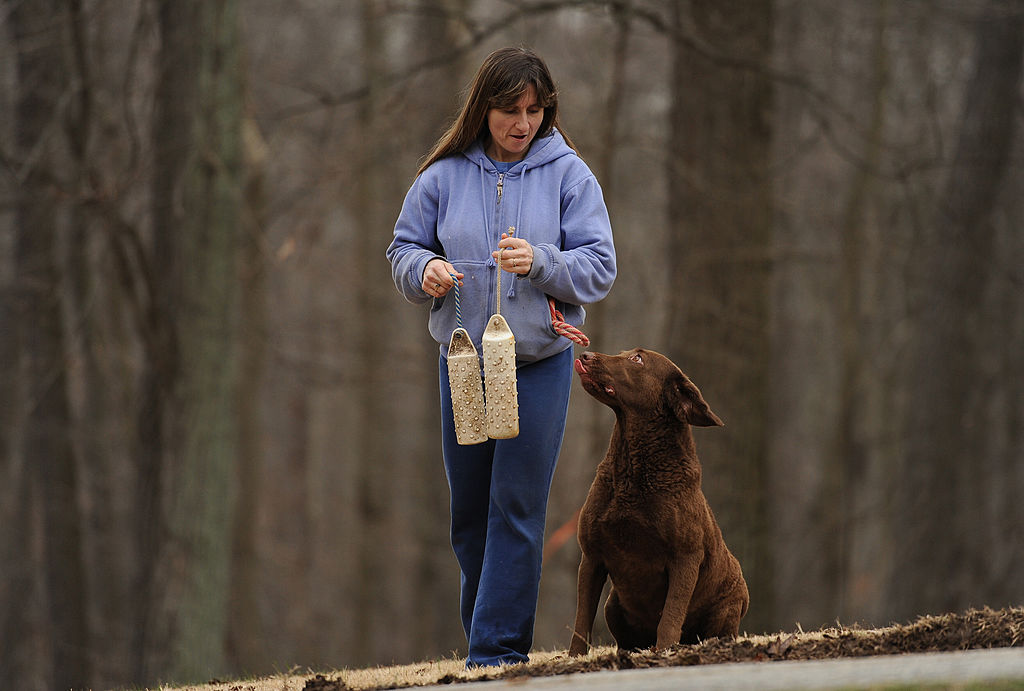
- Physical height: 23-26 inches
- Weight: Male 65-80 pounds
- Weight: Female 55-70 pounds
- Disposition: Tireless, loyal and positive
- Coloration: Various shades of brown, tan and deadgrass. (Note: Deadgrass coloration in a dog is in the yellow family. It can run from faded tan to a dull straw.)
There are so many Chessies along the coast where I hunt that there’s a joke about ‘em: Question: What’s the best aid for training a Chessie?
Answer: A 2×4.
These dogs were bred to hunt the Chesapeake Bay coast, bays, estuaries, and saltmarshes. They have a distinctive and wavy double coat, and are strong, bold dogs. That drive and attitude helps them swim in big seas, frigid water, and heavy currents. If some of their focus spills over into their attitude, then so be it; in many circles, the Chessie is the ultimate retriever.
Their attitude is a bit complicated. On the outside, they’re tough and driven and more interested in pleasing themselves with a retrieve than fetching a duck for their owner. Chessies frequently are considered headstrong which is where the 2×4 joke comes from. But in reality, a Chessie is soft on the inside. They can shut down if a heavy training hand is used, so a handler will need to find the balance between what keeps them running and what keeps them under control.
Chessies are not as laid back as a Lab or a Golden, and they can be wary of other people and dogs. They’re ideal for a more experienced trainer or for a beginner who is working with a pro trainer or a mentor.
German Wirehaired Pointers
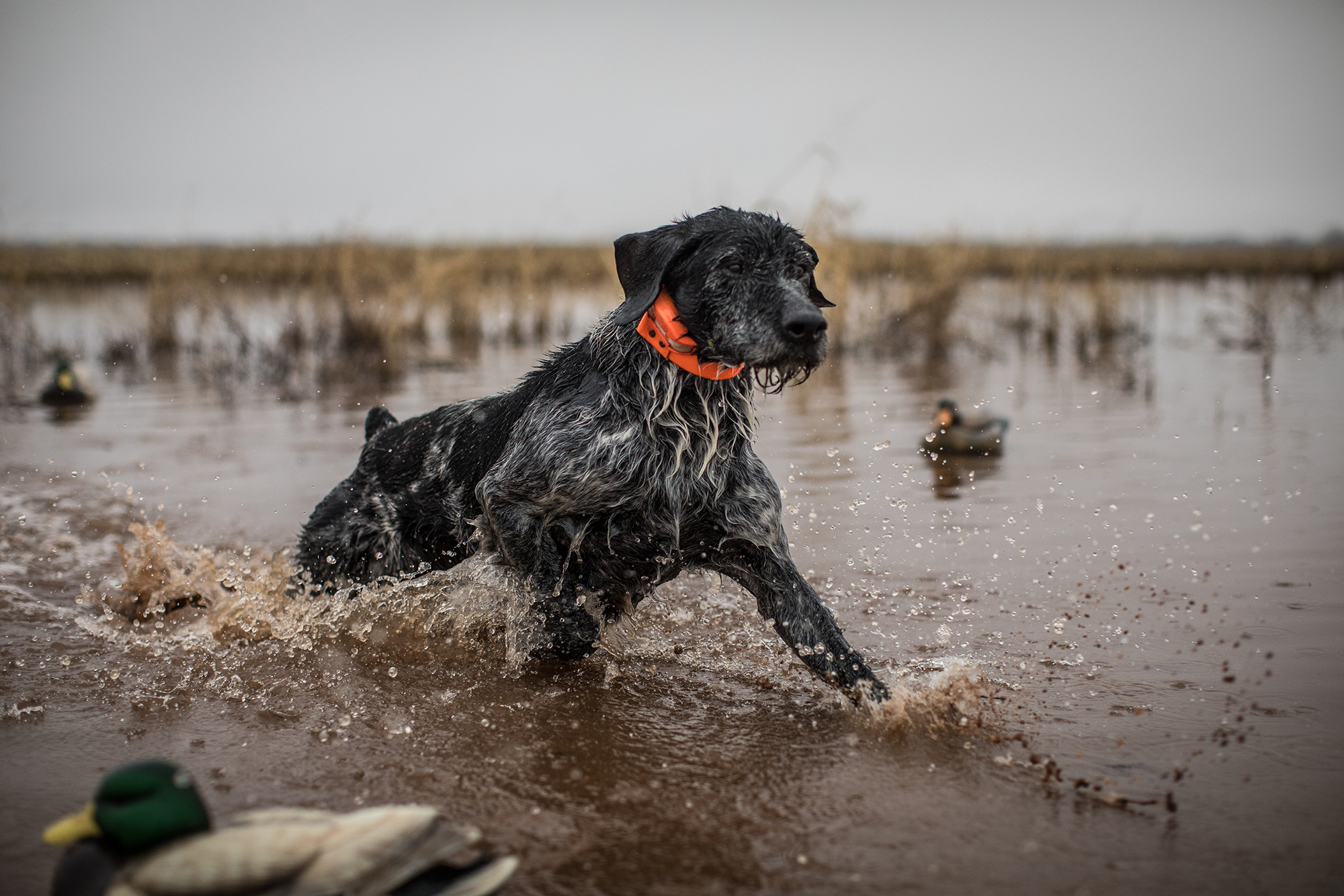
- Physical height: 22-27
- Weight: Male 60-70 pounds
- Weight: Female 45-55 pounds
- Disposition: Stand-offish at first, a little protective, high drive with an on/off switch.
- Coloration: Brown Roan, Black Roan, Liver
A number of years ago, Vermont’s Terry Wilson switched from Chessies to German Wirehaired pointers. Wilson liked the breed so much that he named his hunting dog catalog company, Ugly Dog Hunting, after his dog Scrub. Now that he made the switch to a versatile breed there’s no going back.
“Wirehairs are excellent marking dogs, and they’re steady, bold, and tireless,” Wilson said. “In the late fall and throughout the winter I hunt ducks and geese on Lake Champlain. But I also love to upland hunt. Like many versatile breeds, wirehairs run at a medium range in the uplands so they’re excellent for grouse, woodcock, and pheasant. I also love to travel to hunt, and my dogs have done great on Kansas geese, on puddle ducks, and Bobwhite quail in the South, and on Ruffed grouse and woodcock in my home coverts of Vermont and Maine. I’ve very active in the North American Versatile Hunting Dog Association, so when I’m not hunting, I’m testing. Wirehairs are high energy dogs, so getting ready for tests takes off some of their edge.” Wirehairs do well under a firm training hand and might not be a good dog for a novice handler. A young handler working with a mentor is a solid idea, too.
American Water Spaniel
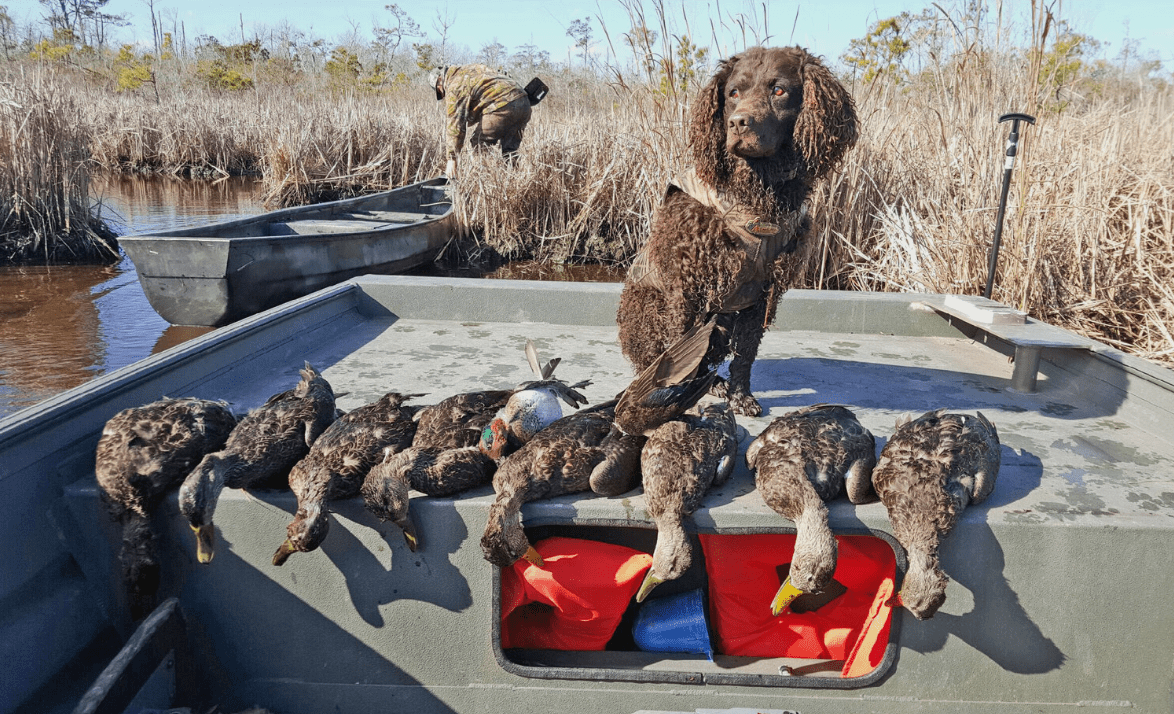
- Physical height: 15-18 inches
- Weight: Male 30-45 pounds
- Weight: Female 25-40 pounds
- Disposition: Smart and biddable.
- Coloration: Brown, Chocolate, Liver
American Water Spaniels are tough, muscular, mid-sized dogs that were bred to hunt in the Great Lakes region. They’ve got waterproof coats and web toes, can handle rough, cold, Great Lakes water, and are always happy. One of the best parts of the American Water Spaniels is their size. Their short height at the withers and light weight make for easy entrances and exits from layout boats, canoes, and blinds. They’re smart, they’re friendly, and loyal. The American Water Spaniel is a good choice for beginners.
German Shorthaired Pointer
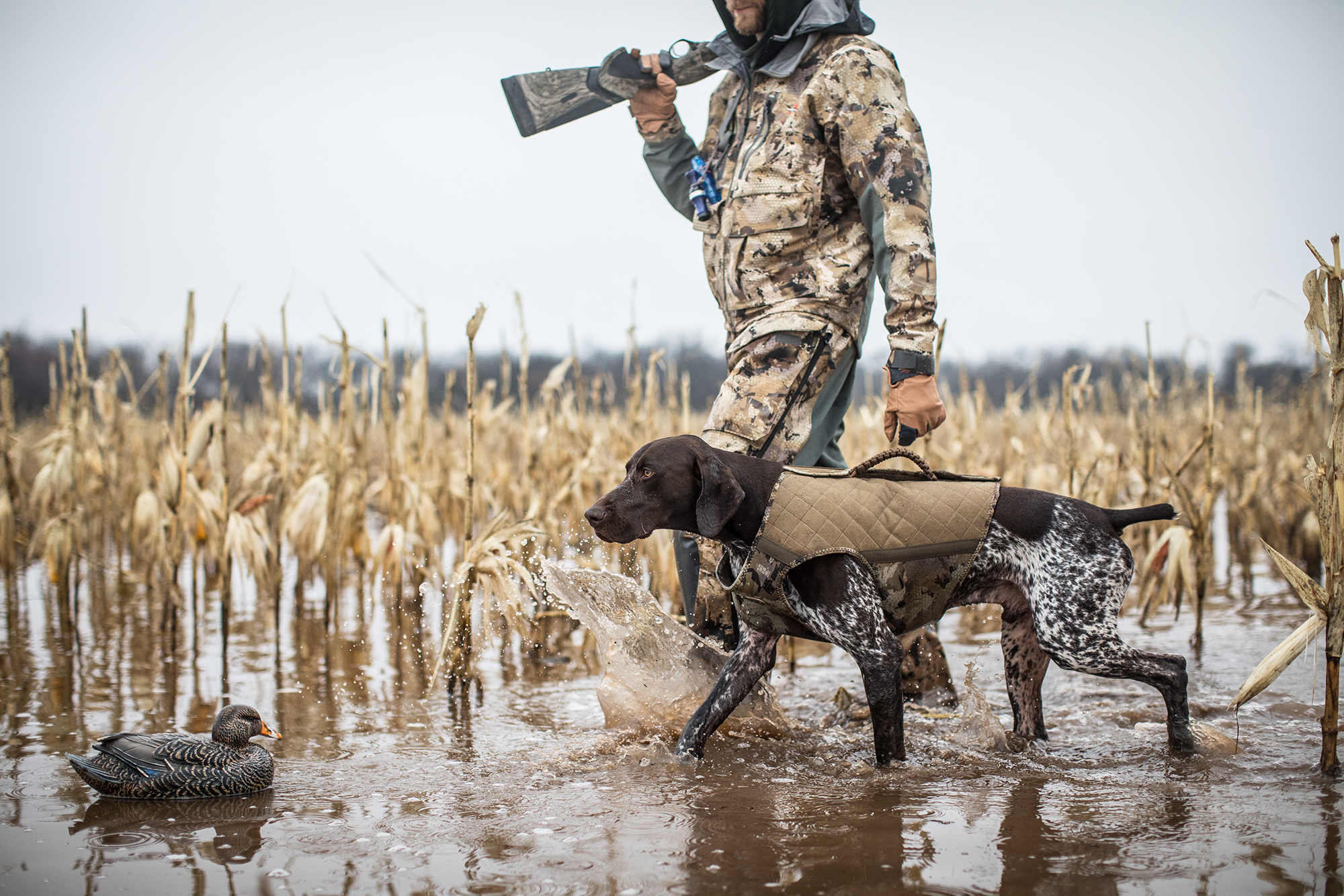
- Physical height: 23-25 inches
- Weight: Male 55-70 pounds
- Weight: Female 45-60 pounds
- Disposition: Eager to please, smart, and friendly
- Coloration: Black, Liver, Black and White, Liver and White, Black Roan, Liver Roan
In recent years, German Shorthaired pointers have increased in popularity so much that they’ve landed in the AKC’s ninth most popular dog in America. GSP’s were built for long workdays, and they come with the full package of endurance, speed, agility, and power. They’re happy dogs that respond well to positive training methods. GSP’s are versatile dogs and are equally happy retrieving waterfowl, pointing upland birds, or tracking rabbits. They’re excellent dogs for beginners.
Curly-Coated Retriever
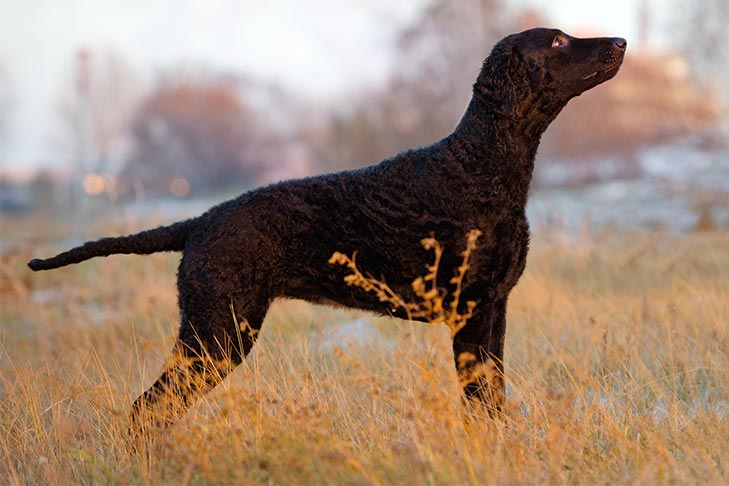
- Physical height: 23-27 inches
- Weight: Male 70-90 pounds
- Weight: Female 60-75 pounds
- Disposition: Bold and confident
- Coloration: Black, liver
Curlys don’t care what they’re retrieving so long as they are retrieving. And while these big dogs love fetching up waterfowl, they’re equally happy picking up upland birds and rabbits. They won’t shy away from frigid, late season water. Their tight curls sit close to their body and keep water from contacting their skin. They’re smart and driven, and with that can come an independence. They’re easy to train because they’re so smart, but you’ll need a firm hand.
Flat-Coated Retriever
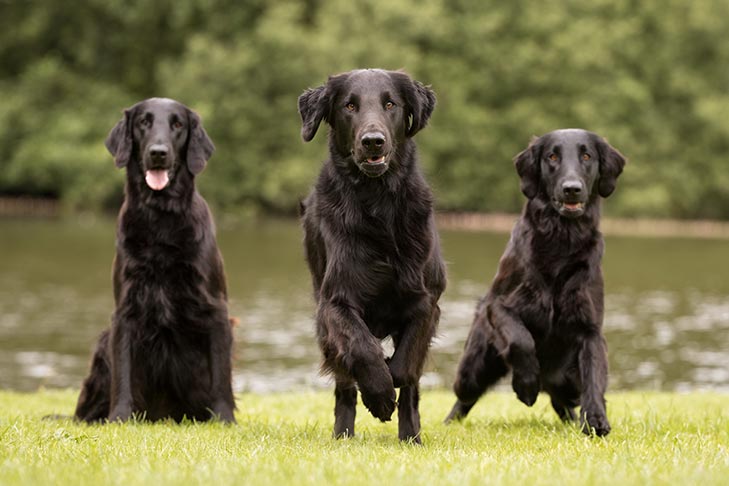
- Physical height: 22-24 inches
- Weight: Male 60-80 pounds
- Weight: Female 55-71 pounds
- Disposition: Smart, upbeat dogs
- Coloration: Black, liver, yellow
Though popular in the early 1900s, the Flat-coated retriever has fallen out of popularity and become more of a show dog. But there are still good ones from hunting stock, and they’re prized for their intelligence, willingness, strength and smooth movement. Flat-coats are very responsive, and their gaits are smooth and efficient. They’re good swimmers and also are excellent upland bird dogs. They’re really outgoing which makes them fun to train, and they love lots of hard work. Think about a Flat-coat if you have plenty of free time for training.
Boykin Spaniel
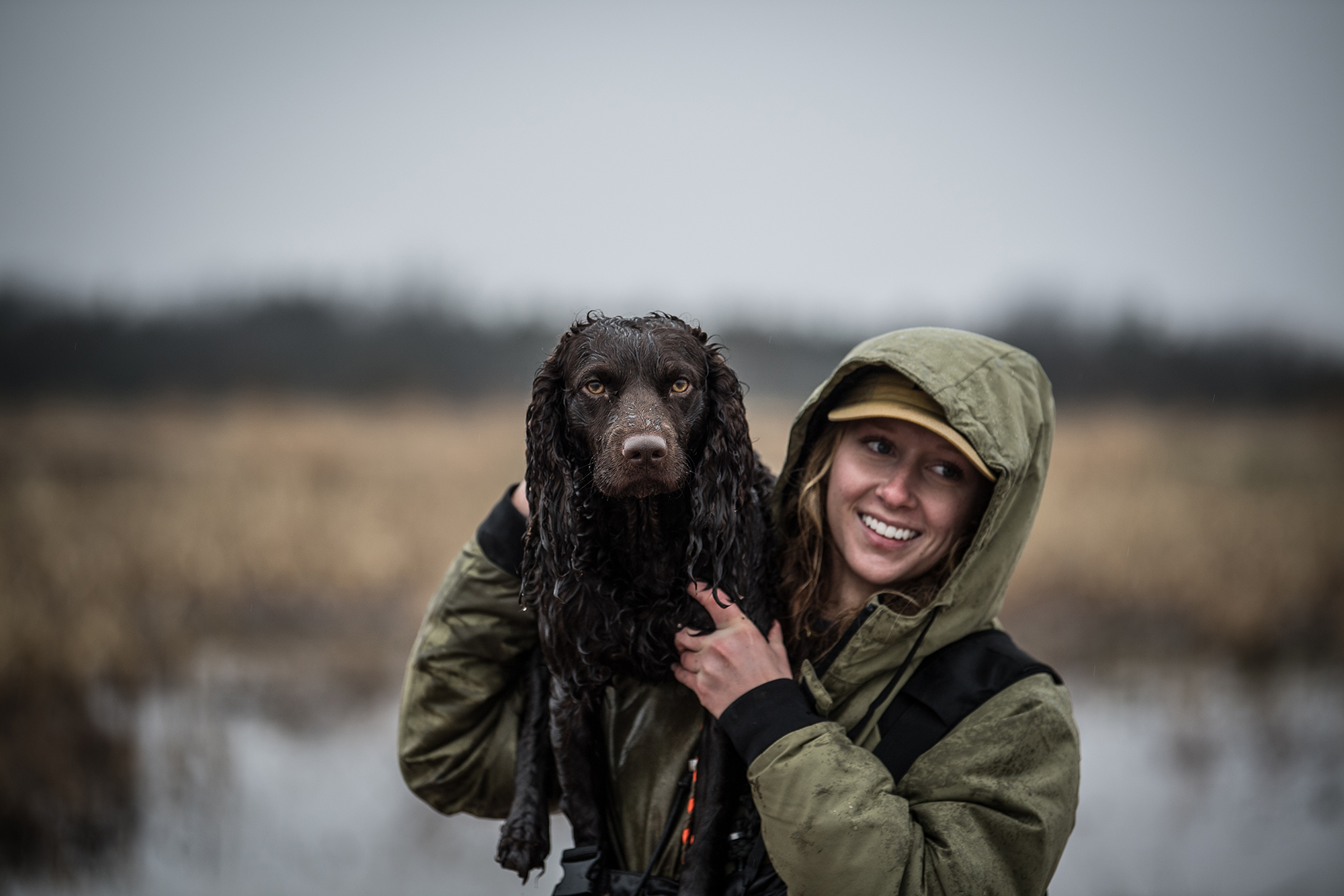
- Physical height: 15-18 inches
- Weight: Male 30-40 pounds
- Weight: Female 25-35 pounds
- Disposition: Eager and trainable
- Coloration: Liver
In terms of size, the Boykin lands somewhere between an English field cocker and a Springer. They were bred for hunting ducks and wild turkey in South Carolina’s lakes and swamps. After a little lapse in popularity, the Boykin breed is growing once again. More hunters are finding out that Boykins are sweet, mellow dogs in the home and are always ready to roll in the field.
Though surrounded by all sorts of retrievers at her family’s Whistling Wings Kennel, Alabama’s Hannah Criscoe loves Boykins.
“I love Boykins because they’re small, compact dogs that have a lot of drive,” she said. “They respond well to positive training methods and are biddable and eager to please. Right now, I’m getting my boy Wheeler ready for both hunting and testing seasons. When it comes to hunting, I mostly hunt ducks with him, but he’ll also get some work as a strike dog on a quail hunt.”
Nova Scotia Duck Tolling Retriever
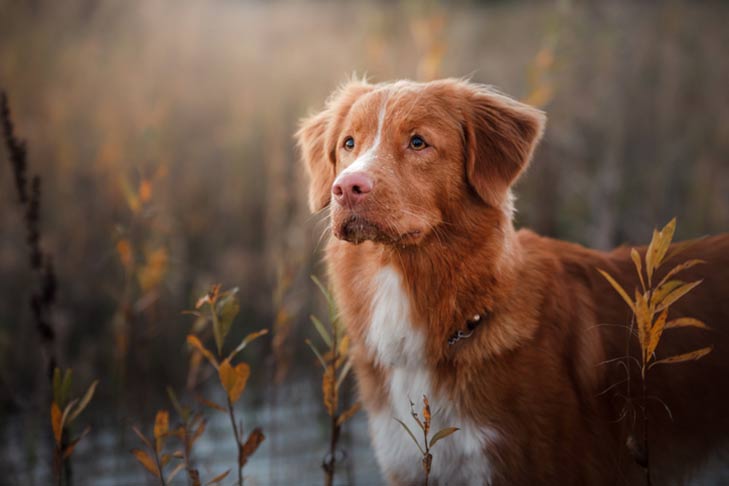
Physical height: 18-21 inches
Weight: Male 40-50 pounds
Weight: Female 35-45 pounds
Disposition: Very alert and intelligent
Coloration: Buff, gold, red gold with white markings
Tolling in the dog’s name comes from the enchanting dance they perform along the shoreline that entices ducks to come close. After hunters dispatched the ducks, the dog would fetch them up and the game began again. Tollers are the smallest in the retriever family, and they love to work so much that they appear sad and lethargic when they’re not active. Their double coat makes them waterproof, and they learn best with a light hand. Tollers don’t respond well to heavy-handed training methods or force.
Where to Find Your Next Duck Hunting Dog
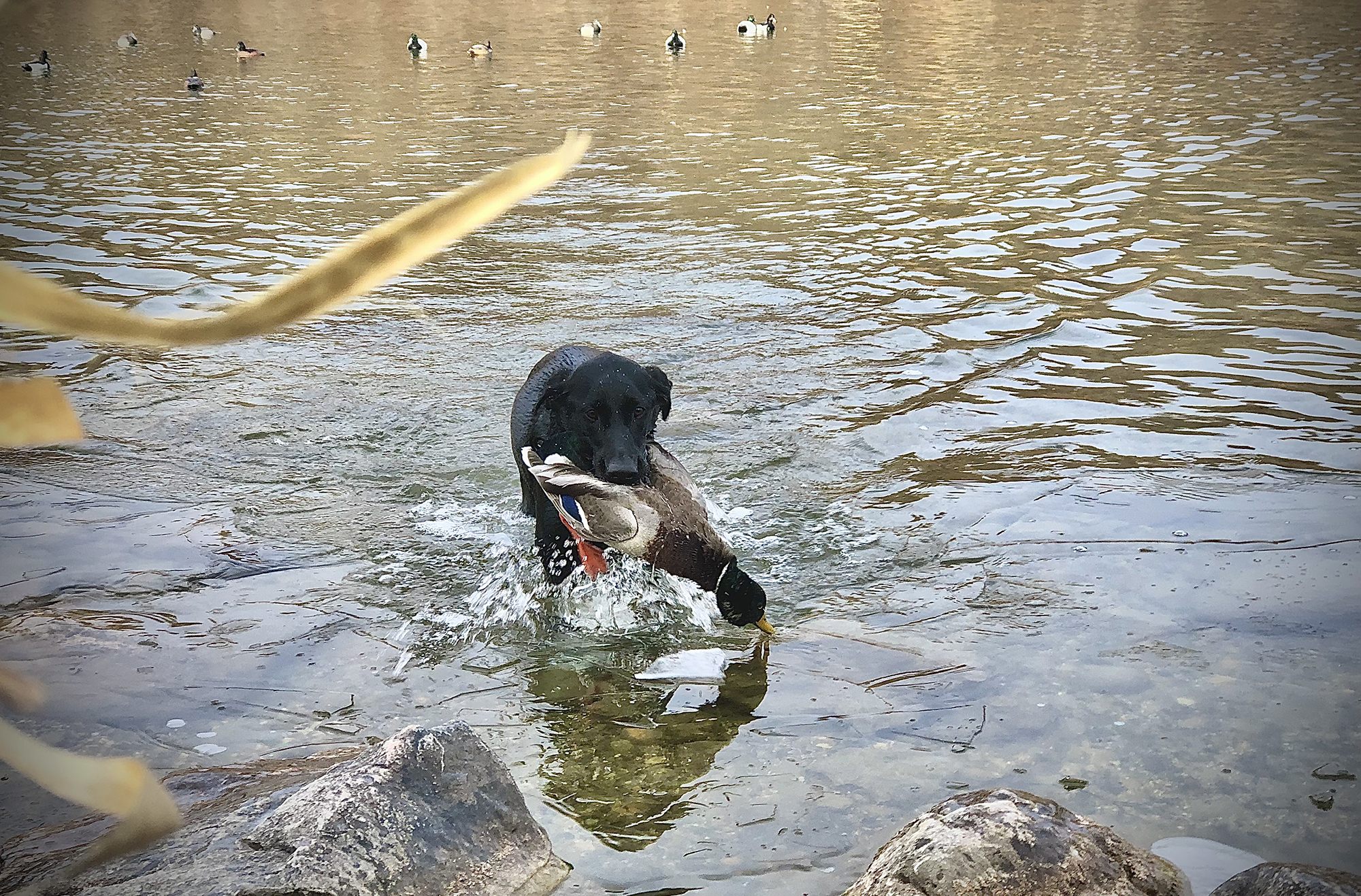
If all goes according to plan, God willing, you’ll have your dog for between a decade and a decade and a half. That’s a good long while, so take your time when selecting a pup. If you know the dog’s lineage that’s great. If not, go to the breeder and watch the dam and sire work. Watching them work is a good indication of the kind of pup you’ll get. If you can’t see them work in person, then see if you can watch a video or two. Here are some of the different places where you’ll find a pup.
Large Breeding Programs
The upside to a large breeding program is that they’ve always got a litter on the ground. These programs focus more on breeding and less on training, and that means that the odds of getting a pup at any time of year are high. There’s a lot of diversity in the mix, and these breeders typically offer satisfaction guarantees as well as return policies. Just know that if they’re selling hundreds (or a thousands) of pups per year, you’re one customer of many.
Small Breeding Programs
Small, well-managed kennels define quality. The owners are very experienced, they study genetics and they’re in it for the dogs. They’ll run a coefficient of inbreeding along with many other tests to reduce litters that have potential health issues. Small breeding programs focus on creating outstanding pups used for field trials, hunt tests, and for hunting.
Private Field Trial Breeding Programs
Performance and breed enhancement are the cornerstones of many private field trial breeding programs. These owners are breeding for the next champion, and that means that they’ll likely only have a few litters per year. These litters typically are of the highest quality; the owners of the dam and sire will keep a pup or two and the rest of the litter will be sold.
Private Hunting Breeding Programs
These are similar to the field trialers, only these breeders are looking to fill a slot on their personal strings. If the breedings are done by owners who understand genetics, then they’ll produce good quality pups. The litters you might want to avoid come from hunting buddies who each have a good dog and figure they’ll breed and get a great dog. They might, but the odds are good that you won’t. It’s like if you have a great apple pie recipe and I have a great carrot cake recipe and then we mix them together.
READ NEXT: The Best Hunting Dog Names
Should You Train Your Own Duck Hunting Dog?
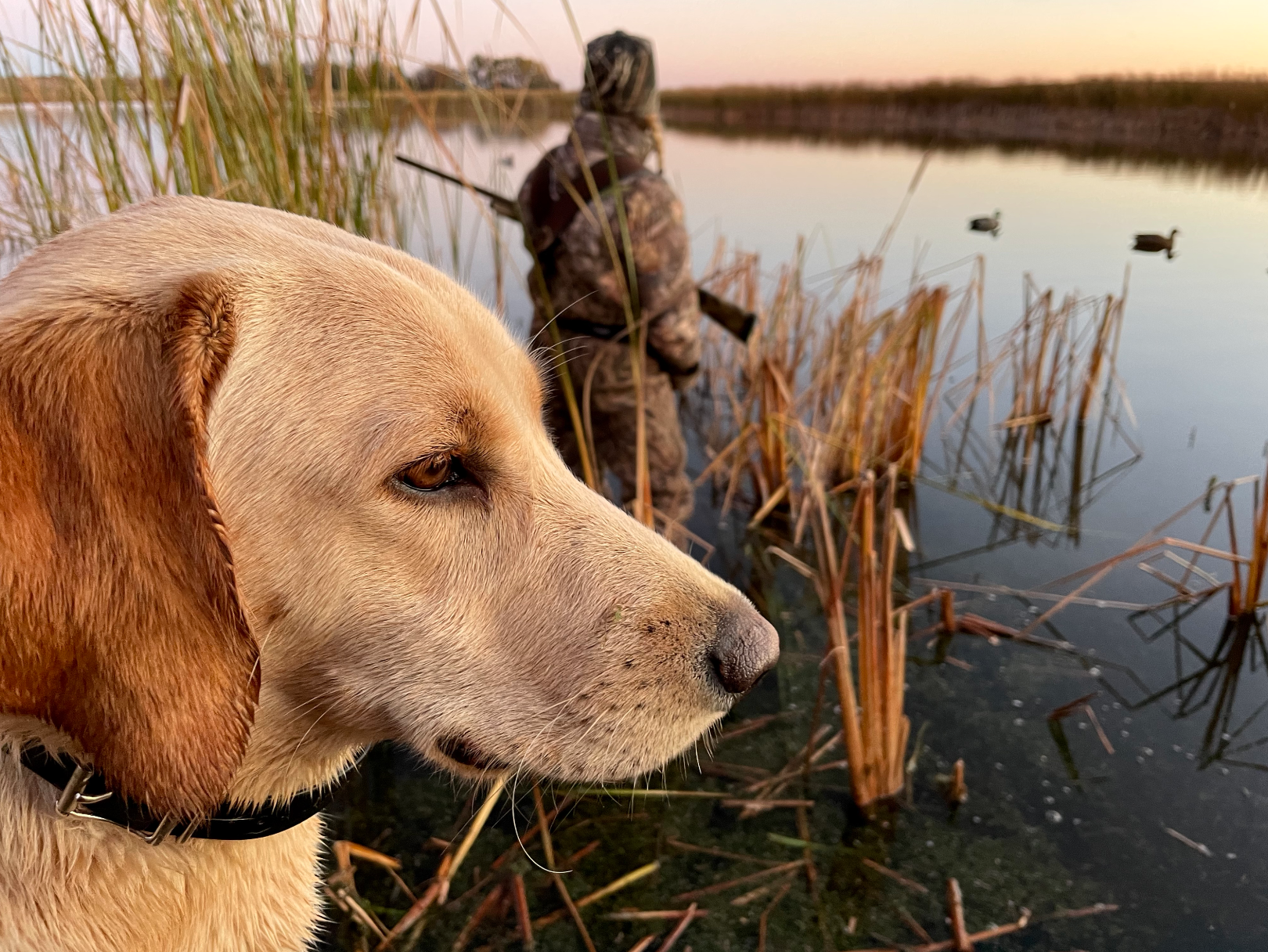
The majority of the dogs on the list are easy to train for a beginner. That said, if you’ve never trained a gun dog you might want some help. These days there are lots of options.
DIY Puppy Training
There is nothing like watching a dog you trained distinguish himself in the field. You’ll pick up your puppy at around 8 weeks, which is the perfect time to start creating a bond. You’ll start with socializing your pup to his new home, train for a crate or kennel, socializing him with people, other animals, and the environment where he’ll work. There are vet visits, regular tailgate checks and nail trimming/ear cleaning/brushing, yard work and commands, exposure to birds, steadiness drills, hand signals, retrieving, and everything else. These days there are probably more books, magazines, websites, and Youtube channels that provide reliable training information than at any other time in history. Yeah, you’ll make some mistakes, but training your own pup is worth it.
Getting Involved with a Club
If you’re training on your own, consider joining a local retriever or NAVHDA club. You’ll find them on the AKC and UKC websites, and your breeder probably knows of others. Most clubs offer regular get training get togethers where you can learn from a mentor.
Pro Trainers
They’ll give you a dog finished to the level of your time and financial investment. If you’re shy on time or if you’ve never trained a dog then it might make sense to have a professionally trained dog.
Get on the Lists
Trialers are in it to win it, and if enough time has passed and they sense that dog won’t give them a shot at a CH or an RUCH then he’ll be placed in a new home. These dogs are considered ‘field trial washouts,’ but the fact is, they’re anything but. They’ll make excellent hunting dogs, and if you factor in the training costs you don’t have to pay, you’ll save a lot of money. And you’ll free up a kennel slot so the trialer can bring along another prospect.
Older field trial dogs or ones that are used for breeding or a commercial hunting operation ultimately get retired. That usually happens when the dog is about 7 years of age. He’s still got some good hunting years in him, so if you get on those lists you might pick up a broke dog of extremely high quality.
Get Your Own Training
A great way to go is if you send your dog to a pro trainer who will let you shadow them while they train your pup. Most of these deals are called ‘train the trainer’ seminars. Having a pro demonstrate how to train a dog fast tracks the learning process and is good for the dog.
When it comes to training, always challenge, but never overwhelm. With regular work and conditioning you’ll move your puppy to a finished duck hunting dog. On Opening Day, it’ll be tough to tell who’s happier; you or your dog.
